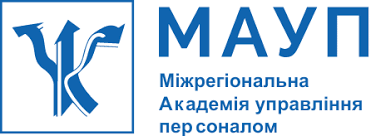COMMON FAKES OF CHINESE POLITICAL PROPAGANDA ON SOCIAL MEDIA (2019–2021)
DOI:
https://doi.org/10.32689/maup.philol.2024.4.7Keywords:
propaganda, manipulation, social media, artificial intelligenceAbstract
The article examines popular Chinese propaganda fakes spread through mass media and social media. The dictatorial regime in China, using mass communications, distributed propaganda materials about the covid-19 pandemic in order to shape public opinion in a certain direction, showing the official authorities in a favorable light. Totalitarian authorities try to control the information space and social networks, promoting their own narratives to create a positive impression of certain events. But often the authorities resort to open falsification of historical events. The People’s Republic of China is significantly increasing its propaganda and disinformation operations in the world, and therefore it is important to know how to counter it and not fall under its influence. Even an average Ukrainian who is not interested in politics knows what kind of political regime prevails in the People’s Republic of China. The Chinese Communist Party determines the course of the state in all areas of its existence, often sacrificing freedom of speech, human rights and social equality for economic growth and the struggle for world hegemony. The government spends wildly to prove how ideal the Chinese utopia is, ignoring the accusations of the capitalist world about human rights violations, authoritarianism or persecution of opponents of the government. The posters that were distributed in China’s information space have the characteristics of propaganda materials that manipulate the minds of voters. Examples of political propaganda of the state are the presentation in a special light of the «covid-19 pandemic». An important source of propaganda is social media, in particular the popular Chinese network ‒ Twitter. The network distributes blatant propaganda materials in cooperation with the authorities.
References
Addressing the Threat Posed by TikTok, and Taking Additional Steps To Address the National Emergency With Respect to the Information and Communications Technology and Services Supply Chain. Federal Register. 2020. URL: https://www.govinfo.gov/content/pkg/FR-2020-08-11/pdf/2020-17699.pdf
Boxiner A., Vaknin E., Volodin A., Barda D., Zaikin R. Tik or Tok? Is TikTok secure enough? Check Point Research. 2020. URL: https://research.checkpoint.com/2020/tik-or-tok-is-tiktok-secure-enough/
China’s sharp power through TikTok. A case study of how China can use sharp power through TikTok. URL: https://www.diva-portal.org/smash/get/diva2:1527742/FULLTEXT01.pdf
Dickinson S. China Cybersecurity: No Place to Hide. China Law Blog. 2020. URL: https://www.chinalawblog.com/2020/10/china-cybersecurity-no-place-tohide.html
Goh B. TikTok Apologises for Temporary Removal of Video on Muslims in China. Reuters. 2019. URL: https://uk.reuters.com/article/ukbytedance-tiktok-xinjiang– idUKKBN1Y2096
Graphika. «Deepfake It Until You Make It». 2023. URL: https://public-assets.graphika.com/reports/graphika-report-deepfake-it-till-you-make-it.pdf
Han E. An Update on Recent Content and Account Questions. Newsroom TikTok. 2019. URL: https://newsroom.tiktok.com/en-us/an-update-onrecent-content-and-account-questions 8. Margaret S. COVID-19 Propaganda in China. URL: https://visualizingthevirus.com/entry/covid-19-propaganda-in-china/
Medcalf R. Australia And China: Understanding the Reality Check. Australian journal of international affairs. 2019. № 73(2), Р. 109–118.
Ostrovsky A. M., Chen J. R. TikTok and Its Role in COVID-19 Information Propagation. Journal of Adolescent Health. 2020. № 67(5). Р. 730.
Perper R. Report claims TikTok parent company ByteDance is working with China’s Communist Party to spread propaganda on Xinjiang. Business Insider. 29 November. 2019. URL: https://www.businessinsider.com/tiktok-parent-company-bytedance-spreads-chinese-propaganda-report-2019-11
Ryan F., Fritz A., Impiombato D. TikTok and WeChat: Curating and controlling global information flows. Policy Brief Report. 2020. № 37. URL: https://s3-ap-southeast-2.amazonaws.com/ad-aspi/2020-09/TikTok%20and%20WeChat.pdf?7BNJWaoHImPVE.6KKcBP1JRD5fRnAVTZ
Walker, C., Ludwig, J. Ecutive Summary. In National Endowment for Democracy. URL: https://www.ned.org/wp-content/uploads/2017/12/Sharp-Power-Rising-Authoritarian-Influence-Full-Report.pdf
Zhang Z. Infrastructuralization of Tik Tok: Transformation, Power Relationships, and Platformization of Video Entertainment in China. Media, Culture & Society. 2020. Р. 12–15.






